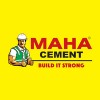
i
Amrit Cement
Filter interviews by
Amrit Cement Graduate Engineer Trainee (Get) Interview Questions and Answers
Amrit Cement Graduate Engineer Trainee (Get) Interview Experiences
1 interview found

(2 Questions)
- Q1. Civil Engineering realted question was asked
- Q2. Different test performed in civil Engineering course,
Interview Preparation Tips
Graduate Engineer Trainee (Get) Jobs at Amrit Cement
Top trending discussions






Interview questions from similar companies

Graduate Engineer Trainee (Get) Interview Questions & Answers
JSW Cementposted on 6 Oct 2017
I appeared for an interview before Oct 2016.
Interview Questionnaire
4 Questions
- Q1. Tell us about yourself
- Ans.
I am a recent graduate with a degree in engineering, eager to learn and grow in the field.
Recent graduate with a degree in engineering
Passionate about learning and growing in the field
Eager to apply my knowledge and skills in a professional setting
- Q2. Explain the project you did in your college?
- Ans.
Designed and implemented a solar-powered irrigation system for agricultural fields.
Researched solar panel efficiency and irrigation system design
Collaborated with local farmers to understand their needs
Implemented a prototype system and tested it in a field setting
Analyzed data on water usage and crop yield to evaluate system effectiveness
- Q3. And some more questions related to Chemical Engineering
- Q4. Asked about my willingness of working in that particular location
Interview Preparation Tips
Experience: We were asked to give the test within a time span of 60 minutes.
Tips: Just be confident and don't spend too much time on a single question. Try to answer as many questions as possible in case of no negative marking.
Duration: 1 hour
Total Questions: 60
Round: Technical + HR Interview
Experience: I was asked about my major project and my introduction and a few simple questions about my subject. Also about why wasn't I placed till that interview.
Tips: Just be frank and answer only what you know, don't try to fake anything or mislead them. Be confident in your answers
College Name: NIT Bhopal

Graduate Engineer Trainee (Get) Interview Questions & Answers
N.C.L. Industriesposted on 23 Nov 2023

(4 Questions)
- Q1. Cement manufacturing process
- Q2. About heat transfer
- Q3. Mechanical unit operations
- Q4. Distillation column

Graduate Engineer Trainee (Get) Interview Questions & Answers
N.C.L. Industriesposted on 25 Feb 2022
I applied via Campus Placement and was interviewed in Aug 2021. There were 3 interview rounds.
(1 Question)
- Q1. Types of soils, Types of cement, concrete, Tests conducted on cement, concrete
- Ans.
The question is about types of soils, cement, and concrete, and tests conducted on them.
Types of soils include clay, sand, silt, and loam.
Types of cement include Portland cement, white cement, and rapid-hardening cement.
Types of concrete include plain concrete, reinforced concrete, and pre-stressed concrete.
Tests conducted on cement include compressive strength test, fineness test, and soundness test.
Tests conducted on...
Interview Preparation Tips

Graduate Engineer Trainee (Get) Interview Questions & Answers
My Home Industriesposted on 21 Feb 2024
I applied via Naukri.com and was interviewed in Jan 2024. There was 1 interview round.
(1 Question)
- Q1. About your project Qtns on fav subject

I applied via Campus Placement and was interviewed before Oct 2021. There were 3 interview rounds.
Technical and english question
Topic was given to all student and had discussion
(4 Questions)
- Q1. Introduction of yourself??
- Q2. Which project you completed
- Ans. In college projects, have depth knowledge
- Q3. Where did you completed training??
- Q4. Give the answer and share your experience
Interview Preparation Tips

Graduate Engineer Trainee (Get) Interview Questions & Answers
Nuvoco Vistasposted on 4 Apr 2024
I applied via Campus Placement and was interviewed in Mar 2024. There were 3 interview rounds.
(2 Questions)
- Q1. Definition of cement
- Ans.
Cement is a binding material used in construction to hold together materials like sand and gravel.
Cement is a fine powder made from limestone, clay, and other minerals.
When mixed with water, cement forms a paste that hardens and binds materials together.
Common types of cement include Portland cement, which is used in most construction projects.
Cement is a key ingredient in concrete, mortar, and grout.
It plays a crucial...
- Q2. Ingredient of cement
- Ans.
The main ingredients of cement are limestone, clay, and gypsum.
Limestone is the main component, providing calcium.
Clay is used to provide silica, alumina, and iron oxide.
Gypsum is added to control the setting time of the cement.
Other additives like fly ash or slag may also be used for specific properties.
GD topic is human vs ai
(2 Questions)
- Q1. Grade of cement
- Ans.
Grade of cement refers to the strength of the cement based on the compressive strength it can achieve after 28 days of curing.
Cement grades are classified as 33, 43, and 53 based on their compressive strength in MPa.
Grade 33 cement has a compressive strength of 33 MPa, grade 43 has 43 MPa, and grade 53 has 53 MPa.
Higher grade cement is used for construction projects that require high strength like bridges and high-rise
- Q2. Which ingredient provide strength and hardnes in cement
- Ans.
The ingredient that provides strength and hardness in cement is calcium silicate.
Calcium silicate reacts with water to form calcium silicate hydrate, which contributes to the strength and hardness of cement
Other ingredients like alumina and iron oxide also contribute to the strength of cement
The ratio of these ingredients in cement mix determines the final strength and hardness of the cement
Interview Preparation Tips

Graduate Engineer Trainee (Get) Interview Questions & Answers
Sanghi Industriesposted on 31 Jan 2022
I applied via Campus Placement and was interviewed in Jul 2021. There were 3 interview rounds.
(1 Question)
- Q1. Electrical machines , Power systems (maximum questions protection) and Power electronics
Series questions, Alphabet logical and Time speed and distance relation questions
(1 Question)
- Q1. Basic questions and answers family background and checked nature and behaviour
Interview Preparation Tips

Graduate Engineer Trainee (Get) Interview Questions & Answers
Infra.Marketposted on 9 Mar 2024
(2 Questions)
- Q1. Planger height from bottom for normal consistemcy
- Ans.
Planger height from bottom for normal consistency is typically around 9 inches.
Planger height from bottom for normal consistency is usually around 9 inches.
This measurement is important in industries like food processing to ensure proper consistency of products.
Examples of products where planger height is measured include dough, batter, and other viscous substances.
- Q2. 5-7mm from bottom
(2 Questions)
- Q1. Slump test value
- Ans.
Slump test value is a measure of the consistency of freshly mixed concrete.
Slump test is used to determine the workability of concrete.
The value is measured in millimeters and indicates how easily the concrete can be placed, compacted, and finished.
A higher slump value indicates a more workable mix, while a lower value indicates a stiffer mix.
For example, a slump value of 100mm would be considered highly workable.
- Q2. 33-37 from top of theplunger

Interview Questionnaire
2 Questions
- Q1. How much you have experience in sales division and how do you work?
- Q2. How you manage your life to business development?
Amrit Cement Interview FAQs
Tell us how to improve this page.
Amrit Cement Interviews By Designations
- Amrit Cement Sales Officer Interview Questions
- Amrit Cement Field Officer Interview Questions
- Amrit Cement SAP Fico Consultant Interview Questions
- Amrit Cement Assistant Engineer Interview Questions
- Amrit Cement Management Trainee Interview Questions
- Amrit Cement Logistics Executive Interview Questions
- Amrit Cement Executive Assistant Interview Questions
- Amrit Cement Process Coordinator Interview Questions
- Show more
Interview Questions for Popular Designations
- Graduate Apprentice Trainee Interview Questions
- Graduate Apprenticeship Trainee Interview Questions
- Graduate Trainee Interview Questions
- Graduate Engineer Interview Questions
- Production Graduate Engineer Trainee Interview Questions
- Graduate Student Interview Questions
- Graduate Apprentice Interview Questions
- Post Graduate Engineer Trainee [pget] Interview Questions
- Show more
Amrit Cement Graduate Engineer Trainee (Get) Interview Process
based on 1 interview
Interview experience
Graduate Engineer Trainee (Get) Interview Questions from Similar Companies
Amrit Cement Graduate Engineer Trainee (Get) Reviews and Ratings
based on 5 reviews
Rating in categories
|
Senior Executive
27
salaries
| ₹3.5 L/yr - ₹6.6 L/yr |
|
Assistant Engineer
22
salaries
| ₹2.4 L/yr - ₹4.8 L/yr |
|
Area Sales Manager
22
salaries
| ₹5.4 L/yr - ₹13.4 L/yr |
|
Assistant Manager
20
salaries
| ₹5 L/yr - ₹8.9 L/yr |
|
Sales Officer
20
salaries
| ₹2.2 L/yr - ₹4.8 L/yr |

Nuvoco Vistas

Infra.Market

Jaquar

JSW Cement
- Home >
- Interviews >
- Amrit Cement Interview Questions >
- Amrit Cement Graduate Engineer Trainee (Get) Interview Questions






